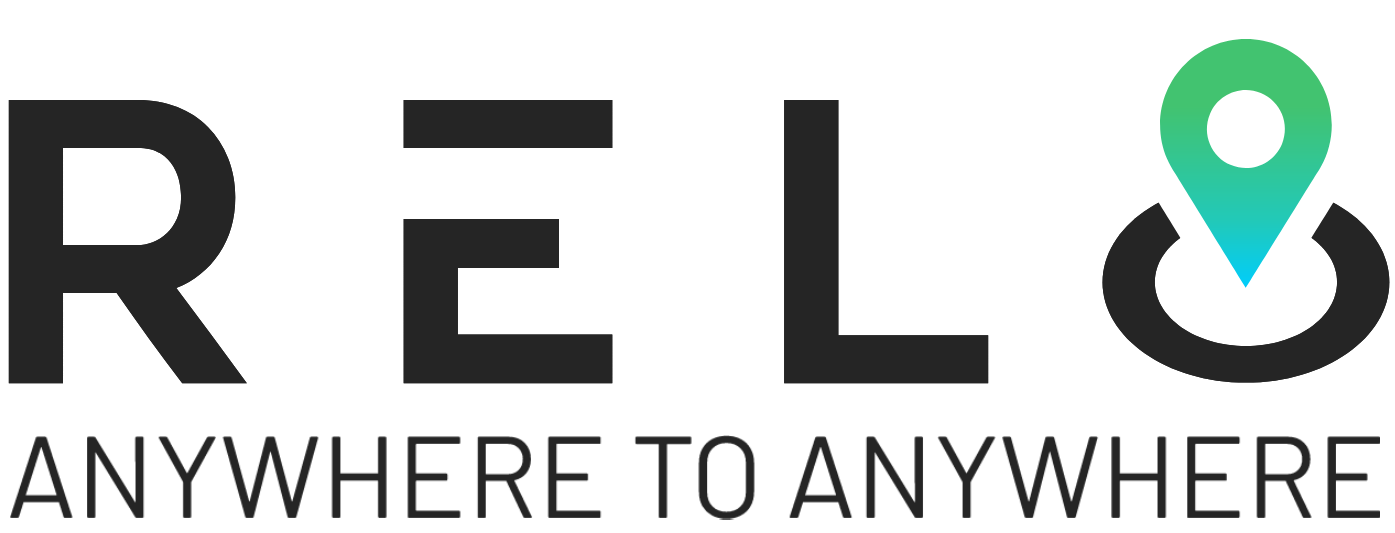Relocating an employee to a new city is like a juggling act. It can shake things up in the office and present hurdles for everyone. If not managed strategically, it can disrupt your business operations. But with a well-crafted plan and a strategic approach, you can keep those disruptions to a minimum and ensure everything keeps chugging along. Relocating can be a rollercoaster of emotions for the employee relocation.
It doesn’t matter if it’s one person or the whole crew packing their bags. Keeping things running smoothly move is vital when folks are relocating.
Here’s what you need to do to make it easy –
1. Develop a Comprehensive Relocation Plan
A well-thought-out relocation plan is crucial. This plan should outline all the steps involved in the corporate relocation process, including timelines, budget, and resources required. Identify critical milestones to track progress and ensure accountability. Regularly review and adjust the plan as needed to address any unforeseen challenges. Engage all relevant stakeholders early in the planning process to provide their input and buy-in.
Critical elements of a comprehensive employee relocation plan include –
- Clear Communication – Keep all stakeholders informed about the relocation process. It includes employees, managers, and relevant departments. Clear communication helps in setting expectations and reduces uncertainties.
- Detailed Timeline – Establish a realistic timeline for the relocation process. It should include deadlines for each stage, from initial planning to final settlement in the new location.
- Budget Allocation – Allocate a budget for the relocation process. It should cover relocating expenses, temporary housing and corporate housing requirements, travel, and other associated costs.
- Risk Management – Identify potential risks and challenges that could arise during the relocation and develop contingency plans to address them.

? Related – How to Effectively Manage Corporate Relocation Costs
2. Provide Support to Relocating Employees
Supporting employees during their employee relocation can significantly reduce stress and disruption. Offer comprehensive relocation packages that cover housing, moving expenses, and travel costs. Create a dedicated support team to assist with logistics and answer employees’ questions. Provide regular check-ins throughout the relocation decisions and process to ensure employees feel supported and address any concerns promptly.
Consider the following support measures –
- Relocation Assistance – Offer professional relocation assistance services. These services can help employees find housing, schools, and other amenities in the new location.
- Financial Support – Provide financial support to cover relocation expenses. It can include relocation costs, temporary housing allowances, and travel expenses.
- Flexibility – Offer flexible work arrangements during the relocation process. It can include remote work options or adjusted work hours to accommodate the move.
- Orientation Programs – Conduct orientation programs to familiarize employees with the new location, including local culture, transportation options, and virtual workspace expectations.
3. Maintain Business Continuity
Ensuring business continuity during the relocation process is essential. Develop contingency plans to handle any unexpected disruptions that may arise. Implement a temporary staffing strategy to cover any gaps left by employee relocation. Regularly communicate with clients and stakeholders to inform them of any potential changes or impacts on service delivery.
Here are some strategies to maintain uninterrupted operations –
- Delegate Responsibilities – To other team members to cover for the relocating employee. It ensures that work continues without interruption.
- Cross-training – Employees to handle multiple roles. It helps in filling any temporary gaps created by the relocating employee.
- Temporary Staffing – Consider temporary staffing to maintain focused and productive operations during the relocation period, preventing delays.
- Backup Plans – Develop backup plans for critical tasks and projects to ensure the relocation process does not disrupt them.
4. Leverage Technology
Technology can play a significant role in minimizing disruption during employee relocation. Utilize virtual collaboration tools to keep teams connected and productive, regardless of their physical location. Implement secure cloud-based solutions for easy access to essential documents and data. Track progress and ensure timely task completion with project management software.
Utilize the following technological solutions –
- Virtual Meetings – Use virtual meeting platforms to maintain remote work communication and collaboration. They ensure that employee relocation remains connected with their teams.
- Project Management Tools – Implement project management tools to track progress and manage tasks. It facilitates keeping everyone on the same page and ensures meeting deadlines.
- Cloud-Based Solutions – Use cloud-based solutions for data storage and access. It allows employees to work from anywhere and ensures that important information is always available.
- Data Security – Ensure that data security measures are in place to protect sensitive information during the relocation process.

?♀ Also read – 21 Best Remote Work Tools For Professionals in 2024
5. Monitor and Evaluate the Process
Continuous monitoring and evaluation of the relocation process are crucial. It helps identify any issues and make necessary adjustments. Use performance metrics to assess the impact on business operations and employee productivity. Solicit feedback from relocated employees to understand their experience and identify areas for improvement. The relocation process should incorporate best practices and lessons learned for future moves.
Key steps include –
- Regular Check-Ins – Schedule regular check-ins with employee relocation to address concerns and provide support.
- Feedback Mechanism – Establish a feedback mechanism to gather input from relocating employees. It can help in improving the relocation process for future moves.
- Performance Metrics – You should track performance metrics to measure how the relocation impacts business operations. It includes productivity levels, project completion rates, and employee satisfaction.
- Issue Resolution – Implement a process for quickly addressing and resolving any issues, like relocation anxiety, stress and loneliness, that arise during the relocation.
6. Create a Relocation Checklist
A relocating checklist ensures that all essential details are noticed. This checklist should cover all aspects of the move. Detail every step to ensure nothing is overlooked and prioritize tasks based on their urgency and importance. Involve employees in creating the checklist to capture all necessary items. Regularly update the checklist to reflect any changes or new requirements.
Include tasks such as –
- Documentation – Ensure all necessary documents, such as work permits, visas, and contracts, are prepared and verified.
- Housing Arrangements – Confirm temporary and permanent housing arrangements in the new location.
- Transport Logistics – It’s arranged to transport personal belongings and office equipment.
- Utility Setup – Ensure that utilities such as electricity, internet, and water are set up and functioning in the new location.
7. Offer Cultural Training
When relocating employees to a different country or region, cultural training can help them adjust more quickly. Provide language courses to ease communication barriers. It enhances their integration into the new environment and improves their language skills through cross-cultural training. Offer workshops on local customs, business etiquette, and cultural differences to prepare employees for their new surroundings.
Consider providing –
- Cultural Awareness Programs – Employees understand their new location’s cultural norms and practices.
- Language Training – Offering language courses through platforms like Rosetta Stone, Duolingo, and Babbel can help employees communicate more effectively in their new environment.
- Local Etiquette Training – Educate employees on local etiquette and business practices to help them integrate smoothly into the new culture.
- Social Integration Activities – Organize activities that encourage social integration and help employees build connections in their new community.

Recommended read – Diversity & Inclusion in Employee Relocation
8. Involve Family Members
Employee relocation often involves their families, and their adjustment can impact the employee’s productivity. Provide resources and support to help families find suitable housing and schools for their children. Assist with student relocation to ensure a smooth transition into new educational environments. Organize family orientation sessions to familiarize them with the new location and available amenities.
Support family members by –
- Family Assistance Programs – Offer programs that help family members find schools, healthcare services, and social networks.
- Spousal Employment Support – Assist spouses in finding employment opportunities in the new location.
- Children’s Programs – Provide resources and support to help children adjust to new schools and social environments.
- Family Orientation – Conduct sessions for the whole family to familiarize them with the new location and amenities.
9. Plan for the Transition Period
The transition period is critical, and planning can help mitigate potential disruptions. Create a detailed transition timeline outlining key milestones and deadlines to keep the process on track. Establish clear communication channels to ensure everyone involved is informed and aligned. Allocate resources efficiently to manage the increased workload during the transition and provide additional training.
Strategies include –
- Overlap Periods – Allow for overlap periods where outgoing and incoming employees can work together, ensuring a smooth handover.
- Gradual Relocation – Implement a phased relocation approach, allowing employees to adjust gradually to their new location while maintaining some responsibilities in their current role.
- Transitional Support – Provide additional support during the transition period, such as temporary housing and travel arrangements.
- Clear Handover Procedures – Establish clear handover procedures to transfer all responsibilities and tasks smoothly.
10. Provide Post-Relocation Support
Post-relocation support ensures that employees settle into their new roles and environments effectively. Regularly check in with relocated employees to address any ongoing challenges they may face. Offer relocation counselling services to help with the emotional and psychological changes of relocation caused by adjustments. Provide resources and support for family members to ensure a smooth transition for the entire household.
It can include –
- Continuous Check-Ins – Regularly check in with relocated employees to address ongoing challenges of international relocation or local moves.
- Mentorship Programs – Pair relocated employees with mentors who can provide guidance and support in the new location.
- Professional Development – Offer opportunities to help relocated employees advance in their new roles.
- Community Building – Encourage community-building activities within the workplace to help relocated employees form new social connections.
Summing Up
By planning, offering support, leveraging technology, and focusing on knowledge transfer, you can significantly reduce disruptions associated with employee relocation. A well-supported employee is more likely to remain engaged and productive throughout the process, which benefits both the individual and the company. You can manage employee relocation smoothly while keeping your business efficient.
It’s a win-win situation for everyone involved!
Effortless Employee Relocation with Relo.AI
Relocate your employees with ease using Relo.AI, regardless of their location.
We help you manage all aspects of the relocation, allowing you to focus on your business.
Book a session with us ? and complete a form to streamline the relocation process.
Let’s grow your business team worldwide! ?











